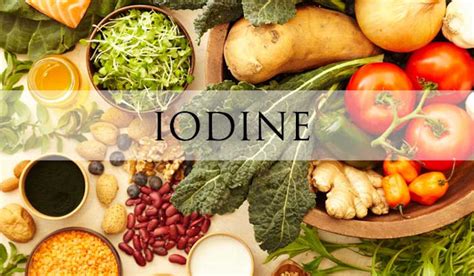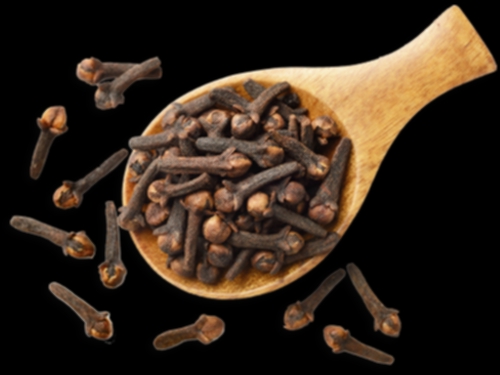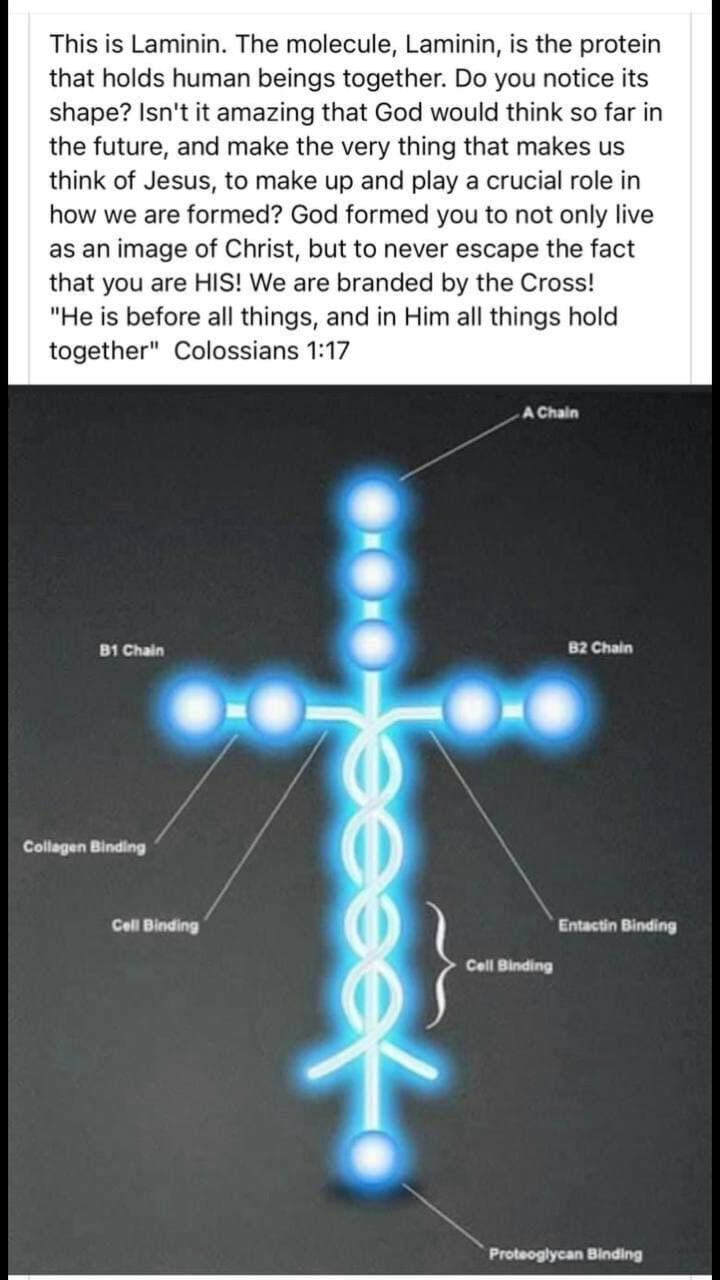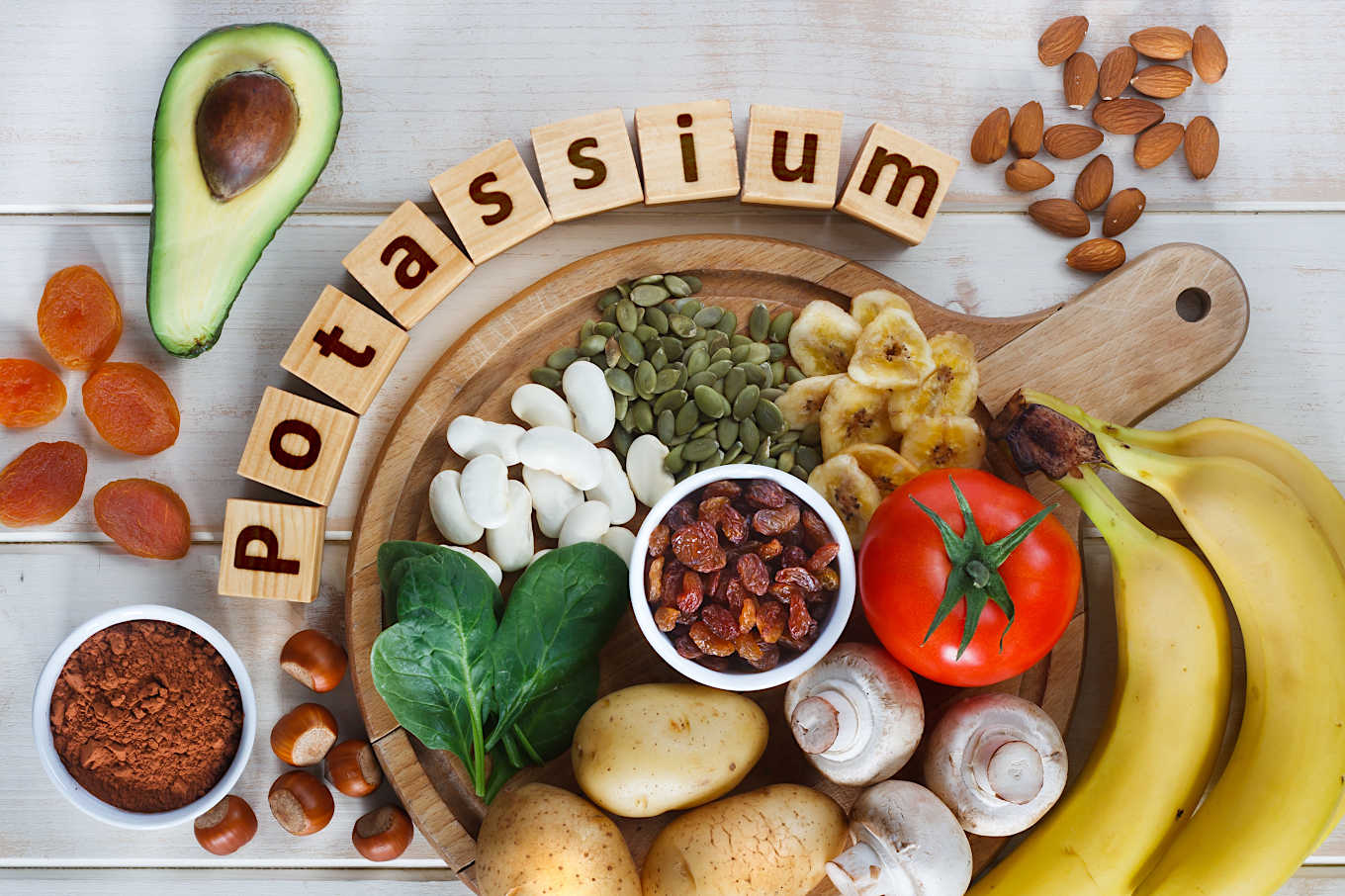Summary
- Iodine is a key component of thyroid hormones, which are required throughout life for normal growth, neurological development, and metabolism. (More information)
- Insufficient iodine intake impairs the production of thyroid hormones, leading to a condition called hypothyroidism. Iodine deficiency results in a range of adverse health disorders with varying degrees of severity, from thyroid gland enlargement (goiter) to severe physical and mental retardation known as cretinism. (More information)
- Iodine deficiency-induced hypothyroidism has adverse effects in all stages of development but is most damaging to the developing brain. Maternal iodine deficiency during pregnancy can result in maternal and fetal hypothyroidism, as well as miscarriage, preterm birth, and neurological impairments in offspring. (More information)
- Even in areas with voluntary/mandatory iodization programs and in iodine-replete countries, pregnant women, lactating mothers, and young infants are among the most vulnerable to iodine deficiency due to their special requirements during these life stages. (More information)
- The recommended dietary allowance (RDA) for iodine intake is 150 micrograms (μg)/day in adults, 220 μg/day in pregnant women, and 290 μg/day in breast-feeding women. During pregnancy and lactation, the fetus and infant are entirely reliant on maternal iodine intake for thyroid hormone synthesis. (More information)
- Thyroid accumulation of radioactive iodine (131I) increases the risk of developing thyroid cancer, especially in children. In case of radiation emergencies, current preventive measures include the distribution of pharmacologic doses of potassium iodide that would reduce the risk of significant uptake of 131I by the thyroid gland. (More information)
- Seafood is an excellent source of dietary iodine. Dairy products, grains, eggs, and poultry contribute substantially to dietary iodine intakes in the US. (More information)
- More than 120 countries worldwide have introduced programs of salt fortification with iodine in order to correct iodine deficiency in populations. (More information)
- In iodine-deficient populations, a rapid increase in iodine intake may precipitate iodine-induced hyperthyroidism. The risk of iodine-induced hyperthyroidism is especially high in older people with multi-nodular goiter. (More information)
- In iodine-sufficient adults, long-term iodine intake above the tolerable upper intake level (UL) of 1,100 μg/day may increase the risk of thyroid disorders, including iodine-induced goiter and hypothyroidism. (More information)
Iodine (I), a non-metallic trace element, is required by humans for the synthesis of thyroid hormones. Iodine deficiency is an important health problem throughout much of the world. Most of the Earth’s iodine, in the form of the iodide ion (I–), is found in oceans, and iodine content in the soil varies with region. The older an exposed soil surface, the more likely the iodine has been leached away by erosion. Mountainous regions, such as the Himalayas, Atlas, Andes, and Alps; flooded river valleys, such as the Ganges River plain in India; and many inland regions, such as central Asia and Africa, central and eastern Europe, and the Midwestern region of North America are among the most severely iodine-deficient areas in the world (1).
Function
Iodine is an essential component of the thyroid hormones, triiodothyronine (T3) and thyroxine (T4), and is therefore essential for normal thyroid function. To meet the body’s demand for thyroid hormones, the thyroid gland traps iodine from the blood and incorporates it into the large (660 kDa) glycoprotein thyroglobulin. The hydrolysis of thyroglobulin by lysosomal enzymes gives rise to thyroid hormones that are stored and released into the circulation when needed. In target tissues, such as the liver and the brain, T4 (the most abundant circulating thyroid hormone) can be converted to T3 by selenium-containing enzymes known as iodothyronine deiodinases (DIOs) (Figure 1; see also Nutrient interactions). T3 is the physiologically active thyroid hormone that can bind to thyroid receptors in the nuclei of cells and regulate gene expression. In this manner, thyroid hormones regulate a number of physiologic processes, including growth, development, metabolism, and reproductive function.
The regulation of thyroid function is a complex process that involves the hypothalamus and the pituitary gland. In response to thyrotropin-releasing hormone (TRH) secretion by the hypothalamus, the pituitary gland secretes thyroid-stimulating hormone (TSH), which stimulates iodine trapping, thyroid hormone synthesis, and release of T4 and T3 by the thyroid gland. The presence of adequate circulating T4 and T3 feeds back at the level of both the hypothalamus and pituitary, decreasing TRH and TSH production (Figure 2). When circulating T4 levels decrease, the pituitary gland increases its secretion of TSH, resulting in increased iodine trapping, as well as increased production and release of both T3 and T4. Iodine deficiency results in inadequate production of T4. In response to decreased blood T4 concentrations, the pituitary gland increases its output of TSH. Persistently elevated TSH levels may lead to hypertrophy (enlargement) of the thyroid gland, also known as goiter.
Deficiency
The thyroid gland of a healthy adult concentrates 70-80% of a total body iodine content of 15-20 mg and utilizes about 80 μg of iodine daily to synthesize thyroid hormones. In contrast, chronic iodine deficiency can result in a dramatic reduction of the iodine content in the thyroid well below 1 mg (1). Iodine deficiency is recognized as the most common cause of preventable brain damage in the world. The spectrum of iodine deficiency disorders (IDD) includes mental retardation, hypothyroidism, goiter, and varying degrees of other growth and developmental abnormalities (4). The World Health Organization (WHO) estimated that over 30% of the world’s population (2 billion people) have insufficient iodine intake as measured by median urinary iodine concentrations below 100 μg/L (5). Moreover, about one-third of school-age children (6-12 years old) worldwide (241 million children in 2011) have insufficient iodine intake (6, 7). Major international efforts have produced dramatic improvements in the correction of iodine deficiency in the 1990s, mainly through the use of iodized salt in iodine-deficient countries (4). Although about 70% of households in the world now have access to iodized salt (8), mild-to-moderate iodine deficiency remains a public health concern in at least 30 countries; there are no iodine excretion data available for 42 other countries, including Israel, Syria, and Sierra Leone (7)
Biomarkers of iodine status
More than 90% of ingested iodine is excreted in the urine within 24-48 hours such that daily iodine intakes in a population can be extrapolated from measures of median spot urinary iodine concentrations (9, 10). According to WHO criteria, population iodine deficiency is defined by median urinary iodine concentrations lower than 150 micrograms (μg)/L for pregnant women and 100 μg/L for all other groups (Table 1). Adequate intakes correspond to median urinary iodine concentrations of 100-199 μg/L in school-age children and 150-249 μg/L in pregnant women (Table 1). While median urinary iodine concentration is a population indicator of recent dietary iodine intake, multiple collections of 24-hour urinary iodine are preferable to estimate intake in individuals (9-11).
Iodine deficiency disorders
All the adverse effects of iodine deficiency in animals and humans are collectively termed iodine deficiency disorders (reviewed in 1). Thyroid enlargement, or goiter, is one of the earliest and most visible signs of iodine deficiency. It is a physiologic adaptation of the thyroid gland in response to persistent stimulation by TSH (see Function). In mild iodine deficiency, thyroid enlargement may be enough to maximize the uptake of available iodine and provide the body with sufficient thyroid hormones. Yet, large goiters can obstruct the trachea and esophagus and damage the recurrent laryngeal nerves.
More severe cases of iodine deficiency result in impaired thyroid hormone synthesis known as hypothyroidism. Adequate iodine intake will generally reduce the size of goiters, but the reversibility of the effects of hypothyroidism depends on an individual’s life stage. Iodine deficiency-induced hypothyroidism has adverse effects in all stages of development but is most damaging to the developing brain. In addition to regulating many aspects of growth and development, thyroid hormones are important for the migration, proliferation, and differentiation of specific neuronal populations, the overall architecture of the brain’s cortex, the formation of axonal connections, and the myelination of the central nervous system, which occurs both before and shortly after birth (reviewed in 14).
The effects of iodine deficiency at different life stages are discussed below.
Pregnancy and lactation
Daily iodine requirements are significantly increased in pregnant and breast-feeding women because of (1) the increased thyroid hormone production and transfer to the fetus in early pregnancy before the fetal thyroid gland becomes functional, (2) iodine transfer to the fetus during late gestation, (3) increased urinary iodine excretion, and (4) iodine transfer to the infant via breast milk (see also The RDA) (12, 15).
During pregnancy, the size of the thyroid gland is increased by 10% in women residing in iodine-sufficient regions and increased by 20%-40% in those living in iodine-deficient regions (16). Iodine deficiency during pregnancy can result in hypothyroidism in women. Maternal hypothyroidism has been associated with increased risk for preeclampsia, miscarriage, stillbirth, preterm birth, and low-birth-weight infants (reviewed in 16). In addition, severe iodine deficiency during pregnancy may result in congenital hypothyroidism and neurocognitive deficits in the offspring (see Prenatal development) (12).
Iodine-deficient women who are breast-feeding may not be able to provide sufficient iodine to their infants who are particularly vulnerable to the effects of iodine deficiency (see Newborns and infants) (17). A daily prenatal supplement of 150 μg of iodine, as recommended by the American Thyroid Association (ATA) (16), will help to ensure that US pregnant and breast-feeding women consume sufficient iodine during these critical periods. In iodine-deficient areas where iodized salt is not available, the Iodine Global Network (IGN; formerly the International Council for the Control of Iodine Deficiency Disorders), the World Health Organization (WHO), and UNICEF recommend that lactating women receive a single annual dose of 400 mg of iodine (or 250 μg/day) and exclusively breast-feed for at least six months. When breast-feeding is not possible, direct supplementation of the infant (<2 years old) with a single annual dose of 200 mg of iodine (or 90 μg/day) is advised (4). A randomized and placebo-controlled trial recently demonstrated that maternal supplementation (with a single 400-mg dose of iodine) improved the iodine status of breast-fed infants more efficiently than direct infant supplementation (with a single 100 mg-dose of iodine) for a period of at least six months (18). Yet, supplementation of lactating women failed to increase maternal urinary iodine concentrations above 100 μg/L, suggesting that supplemented mothers remained deficient in iodine (18).
Prenatal development
Fetal iodine deficiency is caused by iodine deficiency in the mother (see Pregnancy and lactation). During pregnancy, before the fetal thyroid gland becomes functional at 16-20 weeks’ gestation, maternal thyroxine (T4) crosses the placenta to promote normal embryonic and fetal development. Hence, maternal iodine deficiency and hypothyroidism can result in adverse pregnancy complications, including fetal loss, placental abruption, preeclampsia, preterm delivery, and congenital hypothyroidism in the offspring (16). The effects of maternal hypothyroidism on the offspring depend on the timing and severity of in utero iodine deficiency. A severe form of congenital hypothyroidism may lead to cretinism, a condition associated with irreversible mental retardation. The clinical picture of neurological cretinism in the offspring includes severe mental and physical retardation, deafness, mutism, and motor spasticity.
A myxedematous form of cretinism has been associated with coexisting iodine and selenium deficiency in central Africa (see Nutrient interactions) and is characterized by a less severe degree of mental retardation than in neurological cretinism. Yet, affected individuals exhibit all the features of severe hypothyroidism, including severe growth retardation and delayed sexual maturation (12). Two longitudinal cohort studies (one in the UK and one in Australia) recently observed that even mild-to-moderate iodine deficiency during pregnancy was associated with reduced scores of IQ and various measures of literacy performance in children 8 to 9 years of age (19, 20).
Newborns and infants (up to one year of age)
Infant mortality is higher in areas of severe iodine deficiency than in iodine-replete regions, and several studies have demonstrated an increase in childhood survival upon correction of the iodine deficiency (8, 21, 22). Infancy is a period of rapid brain growth and development. Sufficient thyroid hormone, which depends on adequate iodine intake, is essential for normal brain development. Even in the absence of congenital hypothyroidism, iodine deficiency during infancy may result in abnormal brain development and, consequently, impaired intellectual development (23, 24).
Children and adolescents
Iodine deficiency in children and adolescents is often associated with goiter. The incidence of goiter peaks in adolescence and is more common in girls than boys. School-age children in iodine-deficient areas show poorer school performance, lower IQs, and a higher incidence of learning disabilities than matched groups from iodine-sufficient areas. Three meta-analyses of mainly cross-sectional studies concluded that chronic iodine deficiency was associated with reduced mean IQ scores by 7-13.5 points in participants (primarily children) (25-27). However, these observational studies did not distinguish between iodine deficiency during pregnancy and during childhood, and such observational studies may be confounded by social, economic, and educational factors that influence child development.
Adults
Inadequate iodine intake may also result in goiter and hypothyroidism in adults. Although the effects of hypothyroidism are more subtle in the brains of adults than children, research suggests that hypothyroidism results in poor social and economic achievements due to low educability, apathy, and reduced work productivity (28). Other symptoms of hypothyroidism in adults include fatigue, weight gain, cold intolerance, and constipation.
Finally, because iodine deficiency induces an increase in the iodine trapping capacity of the thyroid, iodine-deficient individuals of all ages are more susceptible to radiation-induced thyroid cancer (see Disease Prevention), as well as to iodine-induced hyperthyroidism after an increase in iodine intakes.
Pregnant women
There are no statistics on the global burden of iodine deficiency in pregnant women, but national and regional data suggest that this group is especially vulnerable. Given the increased iodine requirements during pregnancy, the median urinary iodine concentration should be at least of 150 μg/L (see Biomarkers of iodine status). Pooled data from NHANES 2005-2010 reported that US pregnant women had a median urinary iodine concentration of 129 μg/L, and the lowest median concentration (109 μg/L) was observed during the first trimester of gestation, when the embryo/fetus relies exclusively on maternal thyroid hormones (31).
Breast-feeding women
While data regarding the iodine status of breast-feeding women in the US are limited, dietary intakes that were inadequate during pregnancy are likely to be insufficient in a significant fraction of breast-feeding women (33, 34). A systematic review of the literature recently reported suboptimal dietary iodine intakes in breast-feeding women in some countries with a mandatory fortification program, including Denmark, Australia, and India (35). The American Thyroid Association (ATA) recommends that all North American women who are pregnant or breast-feeding supplement their dietary iodine intake with 150 μg/day of iodine (36).
Breast-fed and weaning infants
The body of a healthy newborn contains only about 300 μg of iodine, which makes newborns extremely vulnerable to iodine deficiency (28), and breast-fed infants are entirely reliant on maternal iodine intakes for thyroid hormone synthesis. Even in areas covered by a salt iodization program, weaning infants are at high risk of iodine deficiency, especially if they are not receiving iodine-containing infant formula.
| Life Stage | Age | Males (μg/day) | Females (μg/day) |
|---|---|---|---|
| Infants | 0-6 months | 110 (AI) | 110 (AI) |
| Infants | 7-12 months | 130 (AI) | 130 (AI) |
| Children | 1-3 years | 90 | 90 |
| Children | 4-8 years | 90 | 90 |
| Children | 9-13 years | 120 | 120 |
| Adolescents | 14-18 years | 150 | 150 |
| Adults | 19 years and older | 150 | 150 |
| Pregnancy | all ages | – | 220 |
| Breast-feeding | all ages | – | 290 |
| Food | Serving | Iodine (μg) |
|---|---|---|
| Salt (iodized) | 1 gram | 77 |
| Cod | 3 ounces* | 99 |
| Shrimp | 3 ounces | 35 |
| Fish sticks | 2 fish sticks | 35 |
| Tuna, canned in oil | 3 ounces (½ can) | 17 |
| Milk (cow’s) | 1 cup (8 fluid ounces) | 99 |
| Egg, boiled | 1 large | 12 |
| Navy beans, cooked | ½ cup | 32 |
| Potato with peel, baked | 1 medium | 60 |
| Turkey breast, baked | 3 ounces | 34 |
| Seaweed | ¼ ounce, dried | Variable; may be greater than 4,500 μg (4.5 mg) |
Supplements
Over-the-counter iodine supplements
Potassium iodide is available as a nutritional supplement, typically in combination products, such as multivitamin/mineral supplements. Iodine makes up approximately 77% of the total weight of potassium iodide (56). A multivitamin/mineral supplement that contains 100% of the daily value (DV) for iodine provides 150 μg of iodine. Although most people in the US consume sufficient iodine in their diets (see Sources), an additional 150 μg/day is unlikely to result in excessive iodine intake. The American Thyroid Association (ATA) recommends prenatal supplementation with 150 μg/day of iodine and advises against the ingestion of ≥500 μg/day of iodine from iodine, potassium iodine, and kelp supplements for children and adults, and during pregnancy and lactation (see also Safety) (36, 74).
Iodine fortification programs
The fortification of salt with iodine is a feasible and inexpensive method to eliminate iodine deficiency, and salt iodization programs have been implemented in almost all countries. In North America, salt fortification with iodine is mandated in Canada and some parts of Mexico, but only voluntary in the US such that only 52% of US table salt is iodized and only one-fifth of the total salt consumed in the US is iodized (72, 75). Potassium iodide (KI), cuprous iodide (CuI), and potassium iodate (KIO3) are used to iodize salt. The US Food and Drug Administration (FDA) recommends between 46 and 76 μg of iodine per gram of salt in iodized salt. However, the recent analysis of 88 US iodized food-grade salt samples revealed that the iodine content was below the recommended range in 52% of the samples and above the range in 7% of the samples (76).
In other countries, salt commonly contains 20-50 μg of iodine per gram of salt, depending on local regulations (76). In countries like Denmark (77), Australia (78, 79), and New Zealand (80), the use of iodized salt in the bread-making process is mandated. Additional approaches have been explored, including sugar fortification (81), egg fortification (82), use of iodized salt in the preparation of fermented fish and fish sauce (83), and use of iodine-rich crop fertilizers (84). In addition, fortification of livestock feeds with iodine and the use of iodophors for sanitation during milking contribute to increasing iodine content in dairy products (85). Finally, annual doses of iodized vegetable oil are administered orally or intramuscularly to individuals in iodine-deficient populations who do not have access to iodized salt (4, 56).
Safety
Acute toxicity
Acute iodine poisoning is rare and usually occurs only with doses of many grams. Symptoms of acute iodine poisoning include burning of the mouth, throat, and stomach, fever, nausea, vomiting, diarrhea, a weak pulse, cyanosis, and coma (1).
Excessive iodine intakes
Risk of iodine-induced hyperthyroidism in iodine-deficient individuals
- Iodine supplementation programs in iodine-deficient populations have been associated with an increased incidence of iodine-induced hyperthyroidism (IIH), especially in older people with multi-nodular goiter (86). Iodine intakes of 150-200 μg/day have been found to increase the incidence of IIH in iodine-deficient populations. Iodine deficiency increases the risk of developing autonomous thyroid nodules that are unresponsive to TSH control (see Function). These autonomous nodules may then overproduce thyroid hormones in response to sudden iodine supply. IIH symptoms include weight loss, tachycardia (high pulse rate), muscle weakness, and skin warmth. IIH can be dangerous in individuals with underlying heart disease. Yet, because the primary cause of nodular goiter and IIH is chronic iodine deficiency, the benefit of iodization programs largely outweighs the risk of IIH in iodine-deficient populations (1).
https://lpi.oregonstate.edu/mic/minerals/iodine







